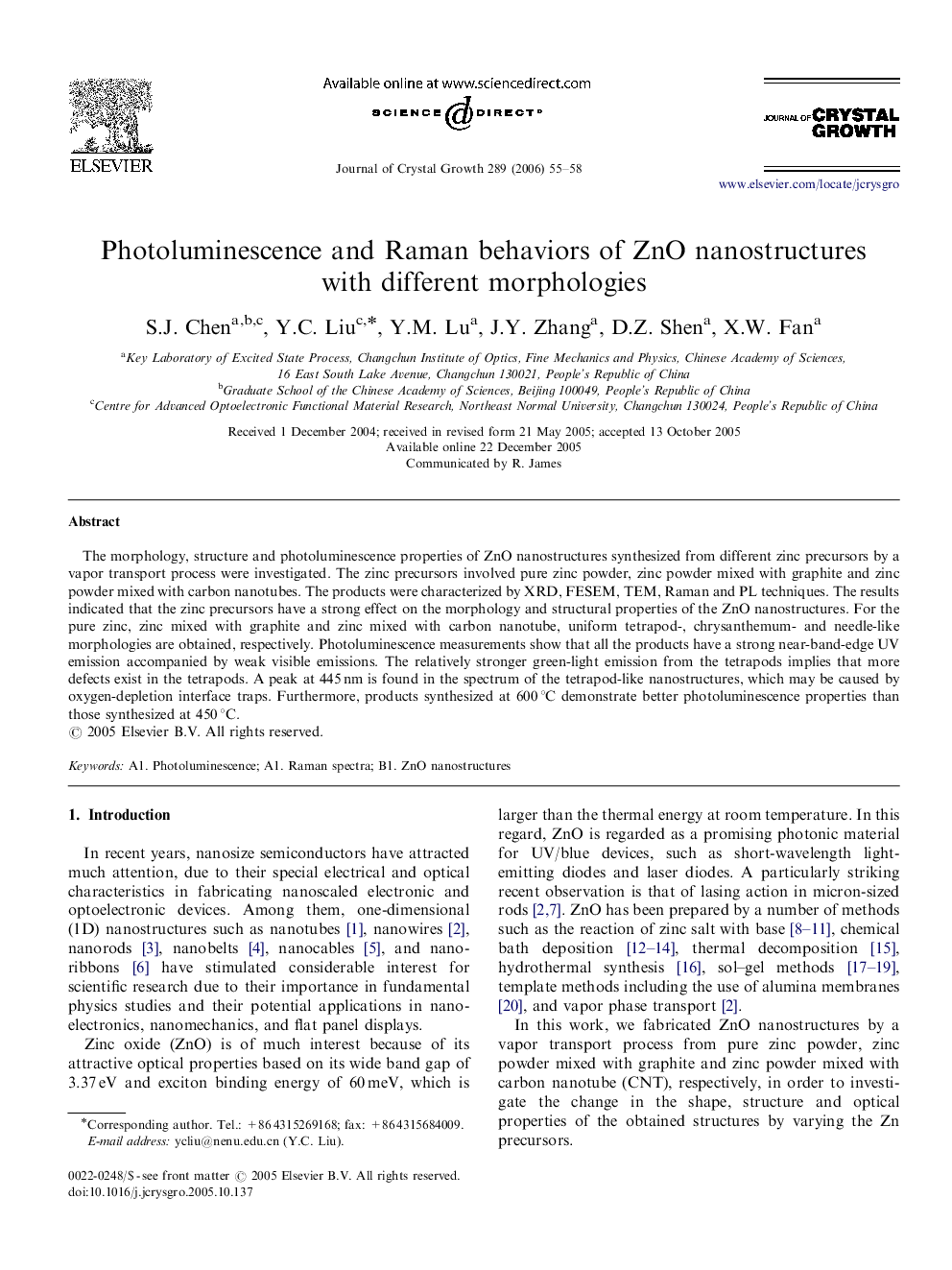| Article ID | Journal | Published Year | Pages | File Type |
|---|---|---|---|---|
| 1797126 | Journal of Crystal Growth | 2006 | 4 Pages |
Abstract
The morphology, structure and photoluminescence properties of ZnO nanostructures synthesized from different zinc precursors by a vapor transport process were investigated. The zinc precursors involved pure zinc powder, zinc powder mixed with graphite and zinc powder mixed with carbon nanotubes. The products were characterized by XRD, FESEM, TEM, Raman and PL techniques. The results indicated that the zinc precursors have a strong effect on the morphology and structural properties of the ZnO nanostructures. For the pure zinc, zinc mixed with graphite and zinc mixed with carbon nanotube, uniform tetrapod-, chrysanthemum- and needle-like morphologies are obtained, respectively. Photoluminescence measurements show that all the products have a strong near-band-edge UV emission accompanied by weak visible emissions. The relatively stronger green-light emission from the tetrapods implies that more defects exist in the tetrapods. A peak at 445 nm is found in the spectrum of the tetrapod-like nanostructures, which may be caused by oxygen-depletion interface traps. Furthermore, products synthesized at 600 °C demonstrate better photoluminescence properties than those synthesized at 450 °C.
Related Topics
Physical Sciences and Engineering
Physics and Astronomy
Condensed Matter Physics
Authors
S.J. Chen, Y.C. Liu, Y.M. Lu, J.Y. Zhang, D.Z. Shen, X.W. Fan,
